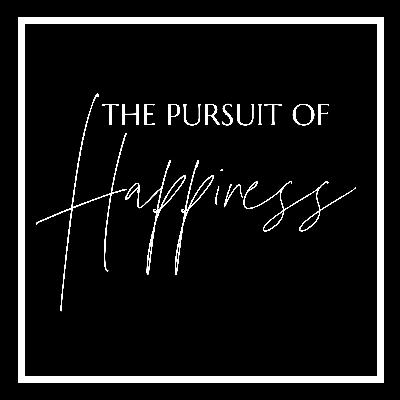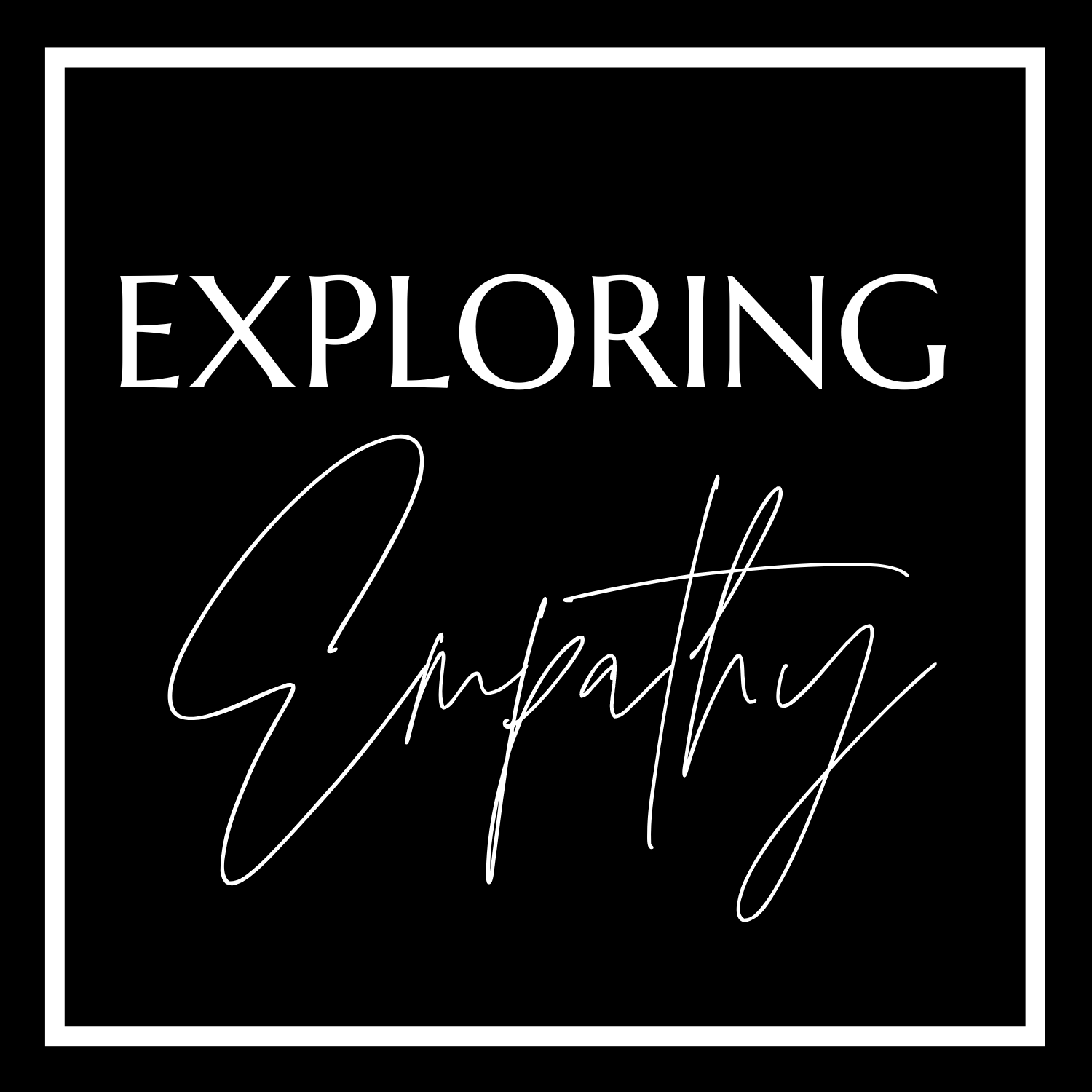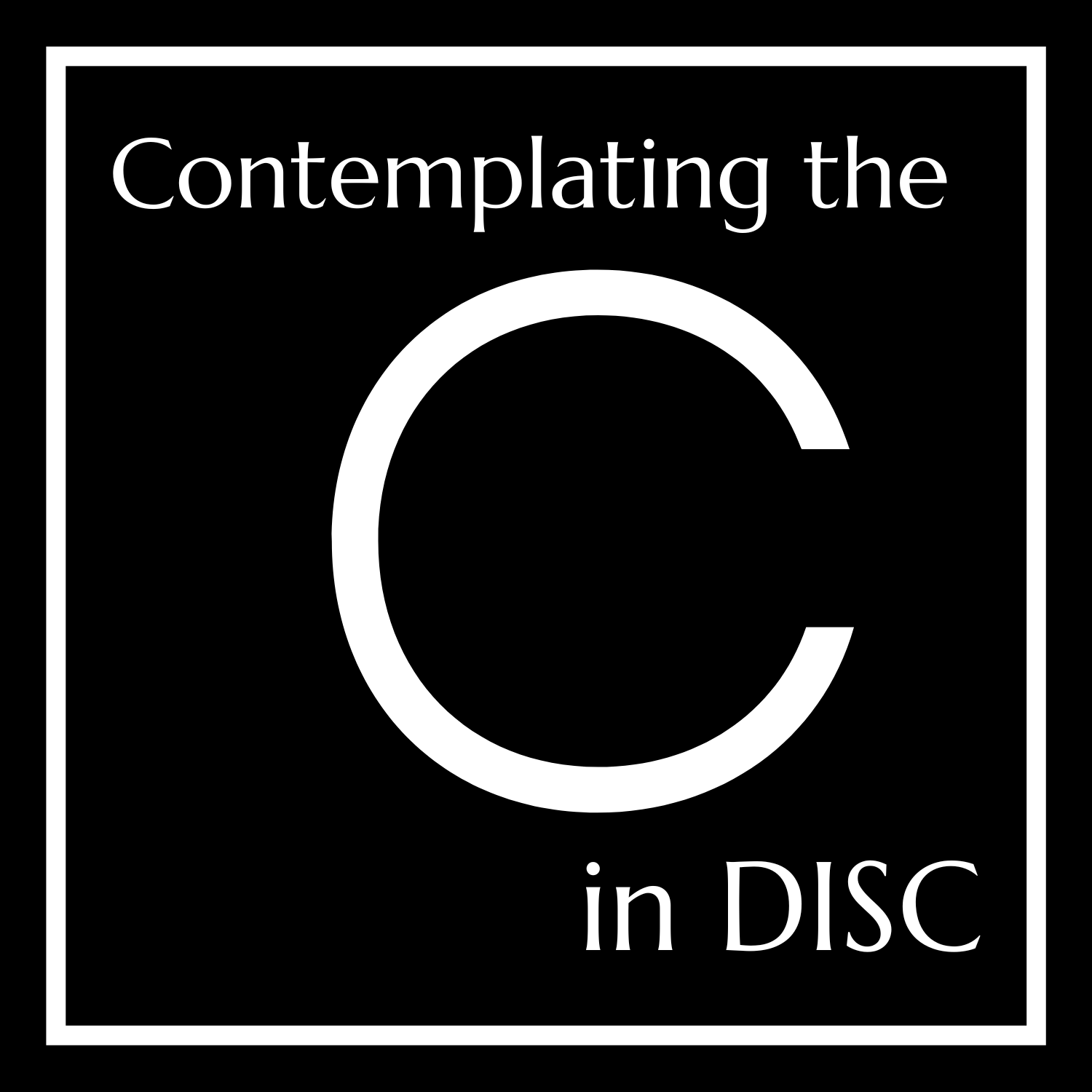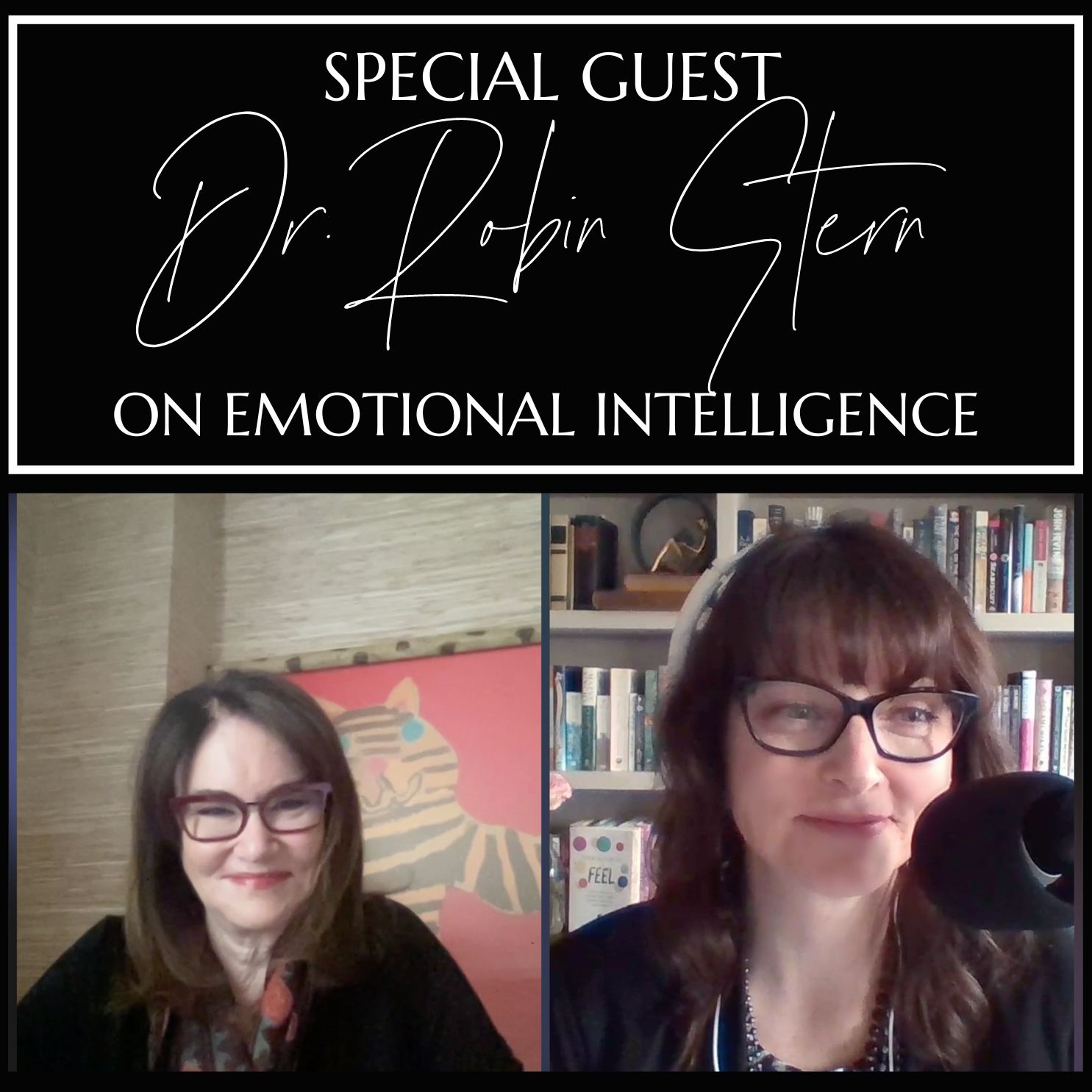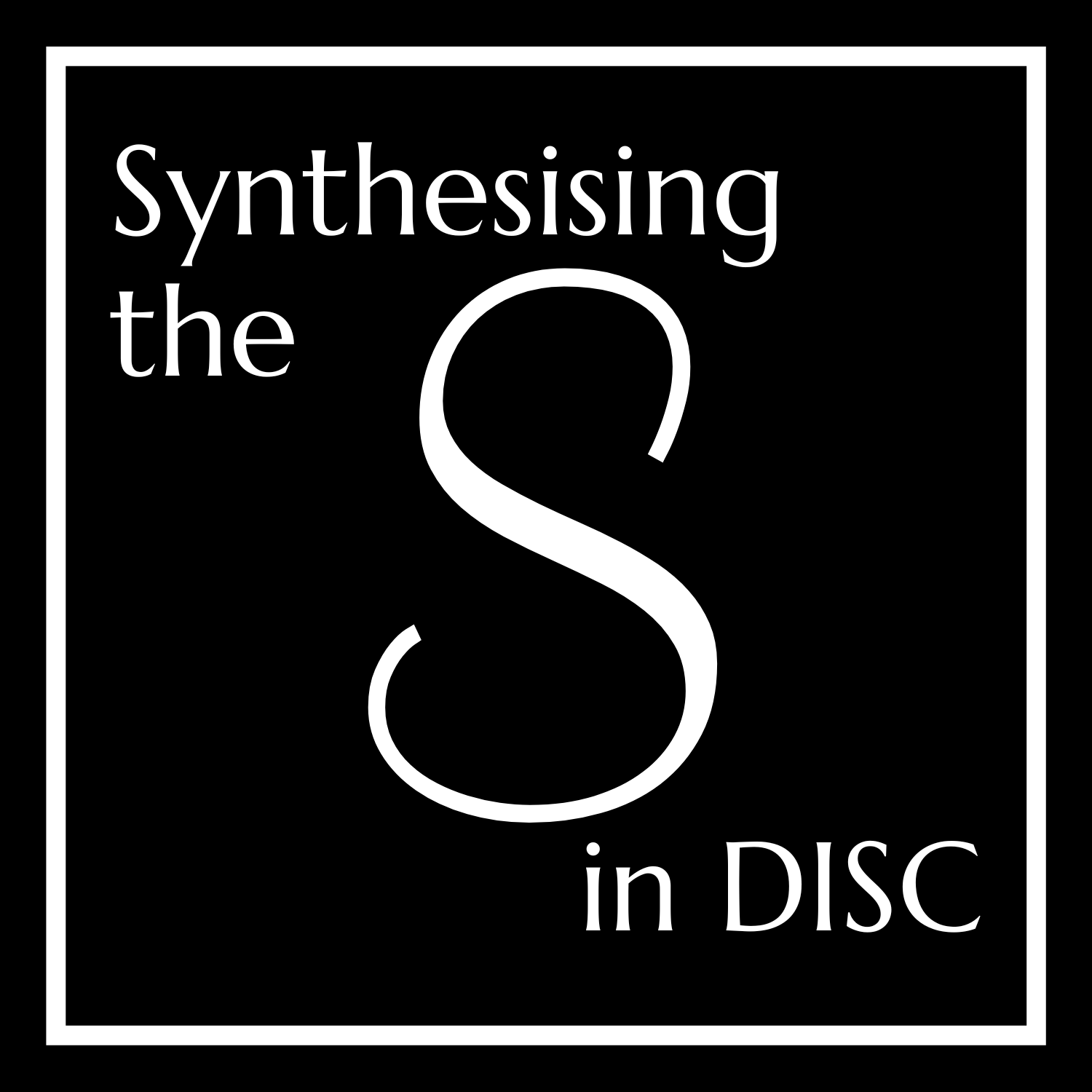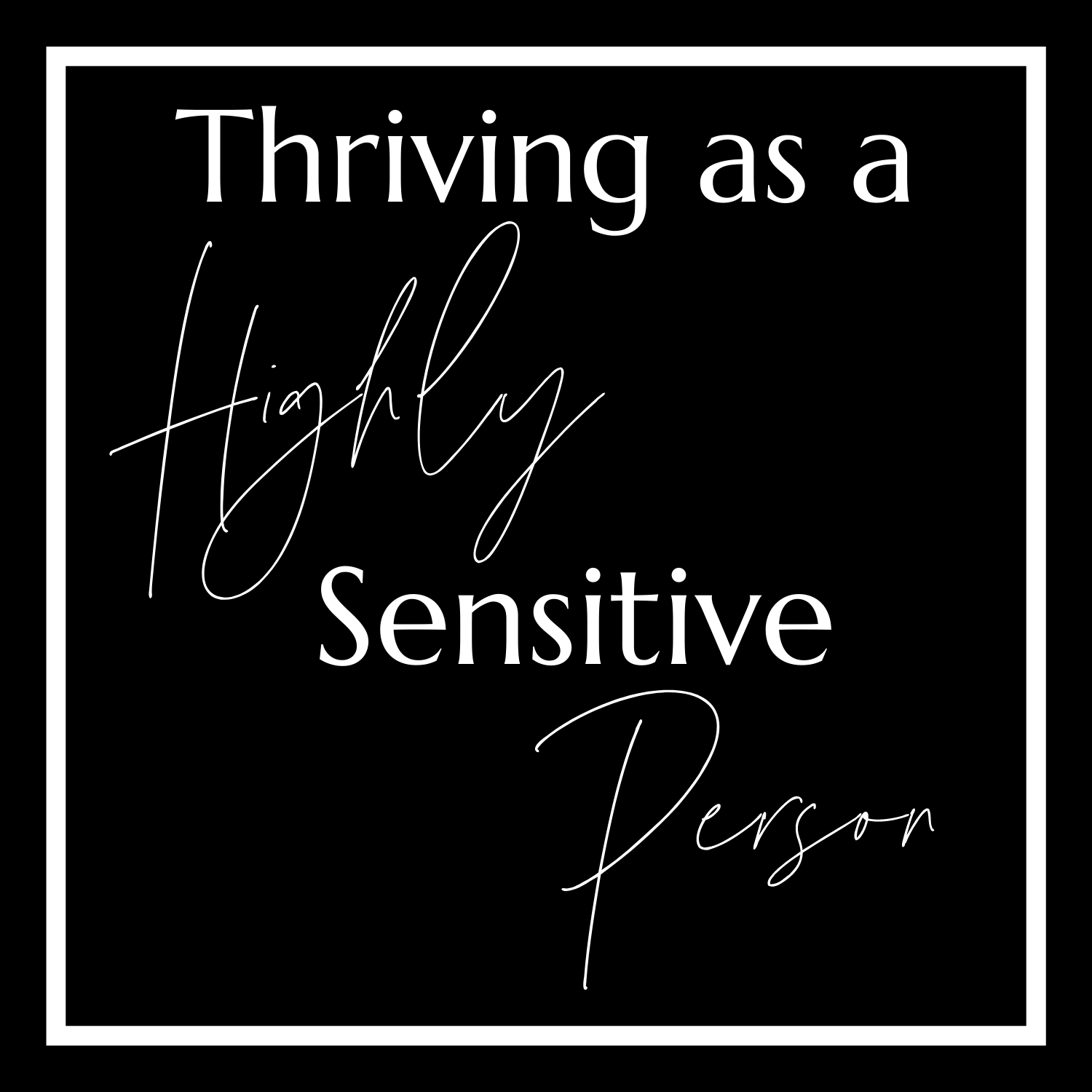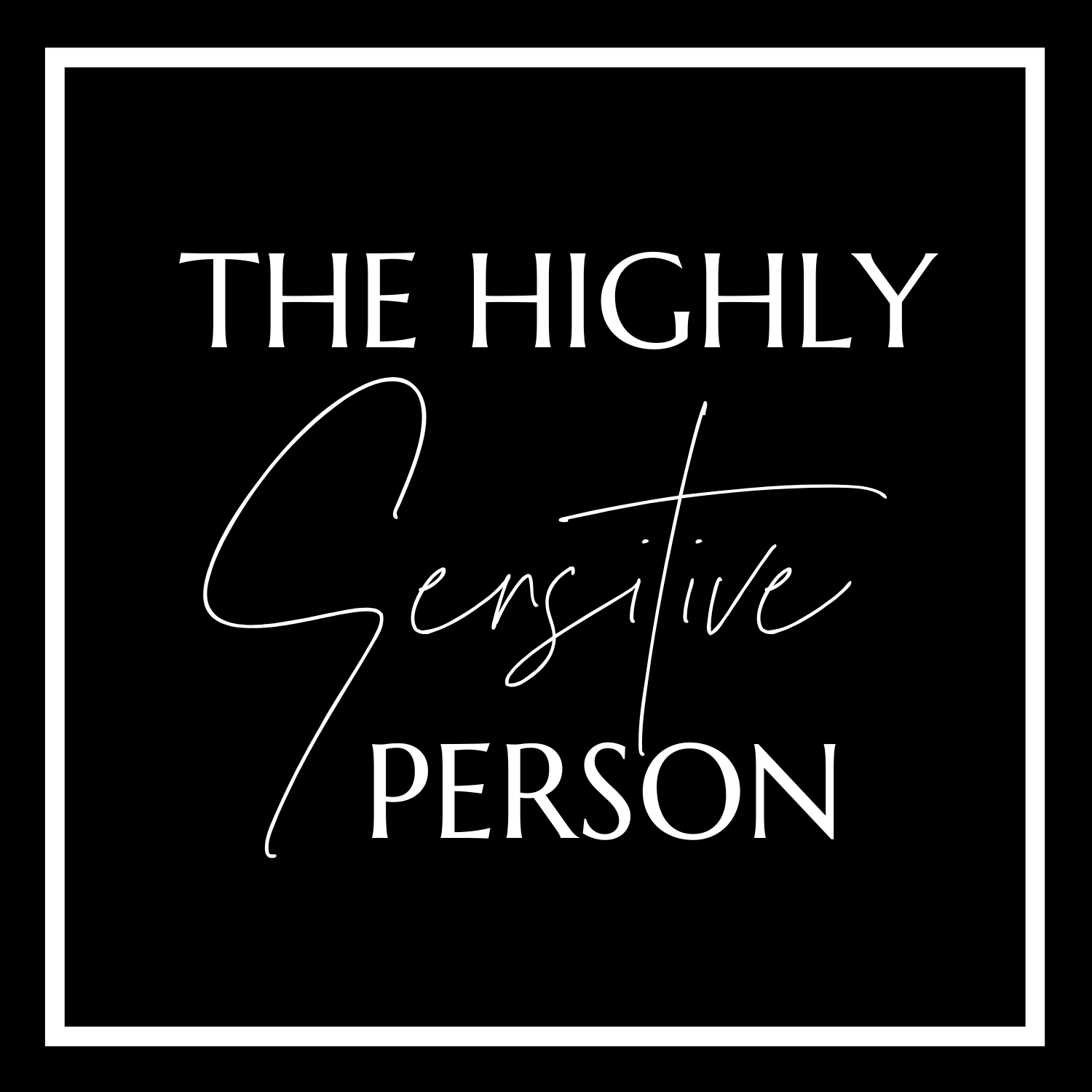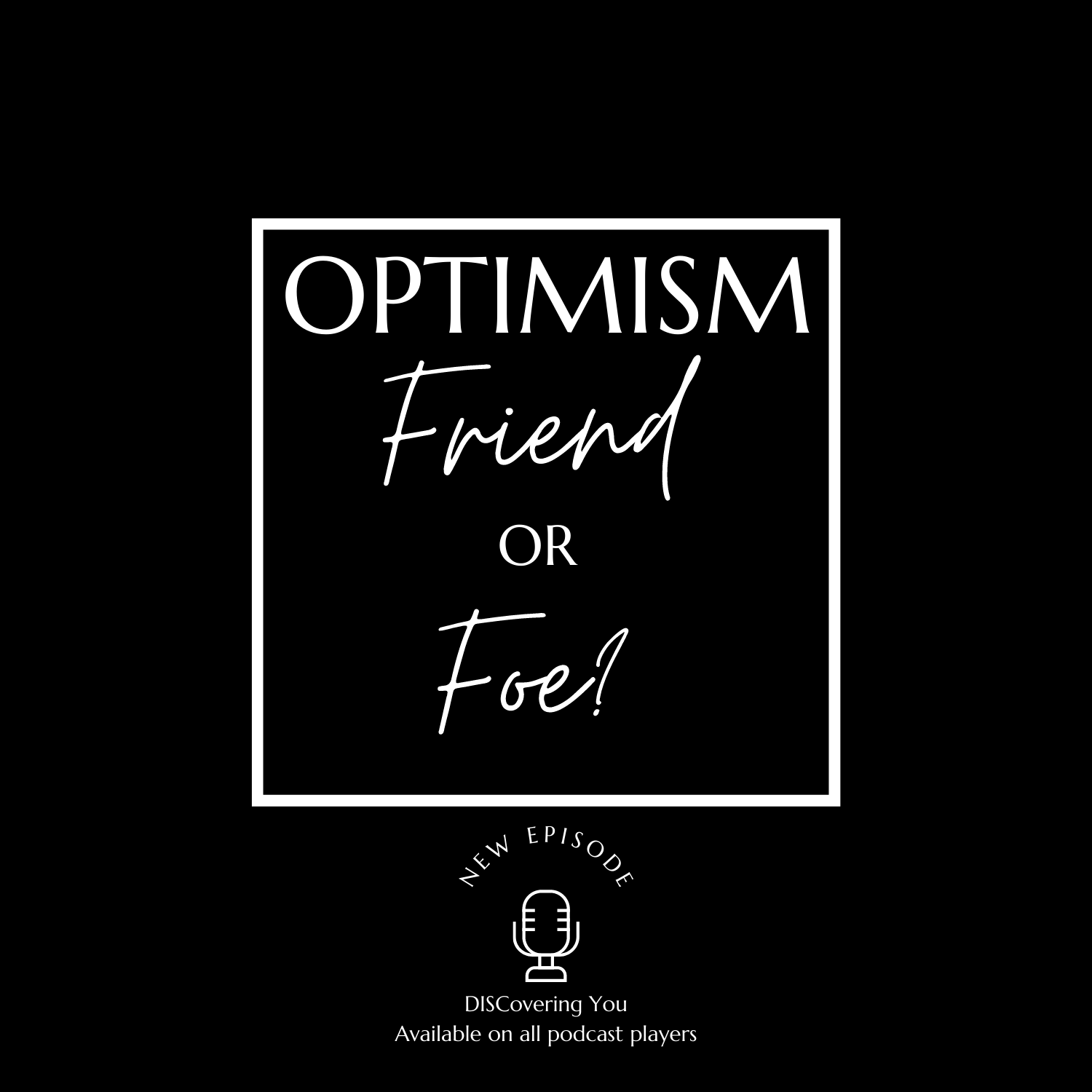Discover DISCovering You
DISCovering You

DISCovering You
Author: Victoria Theriault
Subscribed: 1Played: 57Subscribe
Share
© Copyright 2025 Victoria Theriault
Description
This podcast aims to explore the many ways we can uncover insights into ourselves and others, and how to ensure we are communicating optimally and making real connections. In each episode, we’ll explore a different method of understanding. We’ll look at conduits such as DISC profiling, emotional intelligence, introversion/extroversion, the Enneagram, grit and more. As you’ll soon DISCover, I am incredibly passionate about this topic and I will infuse fun ways to make it easily digestible.
39 Episodes
Reverse
In this highly anticipated episode of DISCovering You, Victoria explores Myers-Briggs! Kicking things off with a clever twist—comparing DISC as manicure styles. From there, she unpacks the origins of MBTI, how it compares to DISC, and what those mysterious four letters actually mean. With warmth, wit, and real-life stories, Victoria walks us through key parts of the MBTI test and reflect on what it reveals about our personalities. Plus, Victoria and Heather make bold predictions about each other’s MBTI types — to be revealed in Part 2!Timestamps:00:00 – Welcome and emotional check-in02:45 – DISC types as manicure styles!04:00 – DISC vs. Myers-Briggs: Key distinction05:00 – Brief history of MBTI and how it works06:00 – The four MBTI dimensions explained (Energy, Mind, Nature, Tactics)08:30 – 5 Sample MBTI questions + Victoria & Heather's responses14:45 – Introduction to MBTI’s 4 personality groups15:30 – How MBTI categories align with DISC profiles18:00 – Predicting each other's Myers-Briggs types21:15 – Call to action: Guess their types before Part 2!22:00 – How to work with VictoriaNotable Quotes:"Everything is about DISC, Heather. Come on." – VictoriaResources Mentioned:📘 The Personality Brokers – Book on the history of Myers-Briggs🔗 16Personalities.com – Free MBTI test🎧 Episode 4 – Reframing Introversion https://pod.link/1614071253/episode/c6b1eb316c9b53c458f7f18df09cf01a📧 Connect with Victoria for coaching or speaking: discoverwhatworks@gmail.com
In this episode, Victoria takes a deep dive into The Growth Zone. Along the way, Victoria has a spontaneous on-the-fly moment, connecting DISC factors to the four common responses to perceived threats: Fight, Flight, Freeze, and Fawn—a completely unscripted insight!The conversation also ties into Carol Dweck’s Growth Mindset (See Episode 9). The episode is packed with psychological insights, personal stories, and practical strategies to help listeners take small, meaningful steps toward growth.Did you watch the Oscars on Sunday? You know what’s coming…here’s DISC as Academy Awards.High D – The Substance. Intense, controversialHigh I – Wicked. Fun, emotionalHigh S – I’m Still Here. Themes of persistence and familyHigh C – Conclave. Themes of tradition and orderTimestamps:[00:00:00] - Podcast intro and mood check-in[00:01:32] - DISC as Academy Awards[00:01:53] - Introduction to the Growth Zone concept[00:02:57] - Fight, flight, freeze, and fawn responses[00:05:00] - The four zones: comfort, fear, learning, and growth[00:06:09] - Self-awareness and leaving your comfort zone[00:07:39] - Benefits of leaving your comfort zone[00:07:51] - Self-actualization[00:08:22] - Growth mindset[00:10:33] - Resilience[00:11:00] - Self-efficacy[00:12:24] - Tips for reaching the growth zone[00:12:30] - Reframing stress[00:17:27] - Personal examples and reflections[00:21:00] – OutroPoll: What’s one small step you can take today to move out of your Comfort Zone and into Growth?If you're interested in learning more about team building, coaching, strategic hiring and onboarding, let's connect!discoverwhatworks@gmail.comhttps://pod.link/1614071253https://discoverwhatworks.org/https://www.facebook.com/VictoriaDISChttps://www.instagram.com/discoverwhatworks/https://www.linkedin.com/in/discoverwhatworks
In this episode, Victoria explores the concept of happiness through the lens of psychology and personality. She discusses the PERMA model of wellbeing developed by Martin Seligman, breaks down different psychological theories of happiness, and shares a happiness assessment based on Seligman's work.Key Topics:DISC analogy comparing personality styles to sportsThree psychological approaches to studying happinessThe PERMA model components: Positive emotion, Engagement, Relationships, Meaning, and AccomplishmentsPractical strategies for increasing happiness in each PERMA areaDiscussion of a happiness assessment with average scores and interpretationsResources Mentioned:Oxford Happiness Questionnaire by Argyle and HillsPERMA model happiness assessment https://www.purposeplus.com/survey/perma-profiler/Martin Seligman's work on positive psychologyHow We Feel app for tracking emotionsTimestamps[00:00:00] - Show introduction and mood check-in with hosts[00:03:00] - DISC analogy: Comparing personality styles to sportsFootball (High D): Direct contact, aggressiveF1 Racing (High I): Glamorous and thrillingRowing (High S): Steady teamworkTennis (High C): Individual focus, rule-bound[00:04:00] - Introduction to happiness assessmentsOxford Happiness Questionnaire overviewPERMA-based assessment introduction[00:08:00] - Three schools of thought on happinessNeed and goal satisfaction theoriesGenetic and personality predispositionProcess activity theories[00:10:00] - Introduction to PERMA model and flourishingOverview of positive psychologyExplanation of PERMA components[00:12:00] - Detailed discussion of Positive emotionWays to build positive emotionsImportance of gratitude practice[00:13:00] - Exploration of EngagementFlow state conceptConnection to strengths and work alignment[00:16:00] - Discussion of RelationshipsImportance of positive social connectionsStrategies for building relationships[00:18:00] - Coverage of MeaningPurpose in lifeWays to build meaning[00:19:00] - Examination of AccomplishmentsInternal vs external motivationSMART goal setting[00:20:00] - Discussion of assessment scoresAverage score explanation (6.8)Hosts' scores and interpretation[00:24:00] - Show conclusion and contact informationIf you're interested in learning more about team building, coaching, strategic hiring and onboarding, let's connect!discoverwhatworks@gmail.comhttps://pod.link/1614071253https://discoverwhatworks.org/https://www.facebook.com/VictoriaDISChttps://www.instagram.com/discoverwhatworks/https://www.linkedin.com/in/discoverwhatworks
In this episode, Victoria explores the concept of charisma and its learnability through warmth and competence cues, as discussed by Vanessa Van Edwards. Victoria and Heather kick off the year with lively discussions about Golden Globe nominated TV characters that exemplify DISC personality traits, their own holiday experiences, and their personal charisma quiz results. The episode emphasizes the importance of balancing warmth and competence in social and professional interactions for improved communication and success.Did you watch the Golden Globes on Sunday? Here's DISC as nominated characters:High D - Jodie Foster as Liz Danvers in True Detective: Night CountryHigh I - Kristen Bell as Joanne in Nobody Wants ThisHigh S - Adam Brody as Noah in Nobody Wants ThisHigh C - Steve Martin as Charles in Only Murders in the BuildingTime Stamps:00:00 Welcome and New Year Greetings00:54 Checking In: Mood Meter01:46 Introducing Today's Topic: Charisma02:10 DISC Illustration with Golden Globes Nominated TV Characters06:59 Vanessa Van Edwards and the Science of People08:34 Understanding Charisma: Warmth and Competence10:06 Charisma Scale and Personal Reflections21:55 Exploring the Charisma Quadrants27:07 Wrapping Up and Final ThoughtsIf you're interested in learning more about team building, coaching, strategic hiring and onboarding, let's connect!discoverwhatworks@gmail.comhttps://pod.link/1614071253https://discoverwhatworks.org/https://www.facebook.com/VictoriaDISChttps://www.instagram.com/discoverwhatworks/https://www.linkedin.com/in/discoverwhatworks
With 2024 coming to a close, today's podcast looks at highlights from this year's episodes. I enjoyed putting this together, as it's a nice way to reflect on the past year and revisit memorable conversations and guests.The holidays are almost here! Let's "unwrap" DISC as presents:High D - Omega Watch: Makes a strong statement - be on time!High I - Chocolates: A sweet, serotonin boostHigh S - Cozy PJ's: Comforting and relaxingHigh C - Books: Entertainment and learning through the written wordResources for this episode: Love LanguagesEI in the World of AIShowcasing Steadiness with Shawn ZIllustrating Influence with Rachel HammerThe Four Archetypes of HappinessRecruiting and Hiring with DISCMeet MichelleMore with MichelleWishing you all the best this holiday season :)To learn more about Victoria and her business offerings visit or email her at mailto:discoverwhatworks@gmail.comConnect with Victoria!https://pod.link/1614071253https://discoverwhatworks.org/https://www.facebook.com/VictoriaDISChttps://www.instagram.com/discoverwhatworks/https://www.linkedin.com/in/discoverwhatworks
I’m excited to get into this episode but first, it’s time for our DISC analogy:If DISC was a board game, what would it be?High D – Monopoly – described as the ultimate game of capitalism. The goal is to drive your competitors into bankruptcy!High I – Charades – interactive, emotive, fun, high spiritedHigh S – Game of Life – it rewards players for good behaviour. For instance, recycling, helping othersHigh C – Clue – Using deductive reasoning, to solve a mysteryThis checks out for me – I LOVE Clue, which one is your fav, Heather?Let's jump into part 2 of my discussion with Michelle Minnikin, (if you haven’t listened to part 1) she’s an Organizational Psychologist, Executive Coach, and Author of the book, Good Girl Deprogramming. Part 1 with Michelle Minnikinhttps://www.michelleminnikin.com/ To learn more about Victoria and her business offerings visit or email her at mailto:discoverwhatworks@gmail.comConnect with Victoria!https://pod.link/1614071253https://discoverwhatworks.org/https://www.facebook.com/VictoriaDISChttps://www.instagram.com/discoverwhatworks/https://www.linkedin.com/in/discoverwhatworks
I also had the opportunity to interview Michelle Minnikin, an organizational psychologist, executive coach, and author. We chatted about everything from the best way to use psychometric tools in the workplace, to what compelled us to do the work that we do. You can check out part 1 of my conversation with Michelle on today's episode of DISCovering You 👇It's International Coffee Month! What's your preference?High D - Espresso: Swift, boldHigh I - Macchiato: Sweet, frothyHigh S - Latte: Smooth, mellowHigh C - Americano: Strong, preciseIf you're interested in learning more about team building, coaching, strategic hiring and onboarding, let's connect!To learn more about Victoria and her business offerings visit or email her at mailto:discoverwhatworks@gmail.comConnect with Victoria!https://pod.link/1614071253https://discoverwhatworks.org/https://www.facebook.com/VictoriaDISChttps://www.instagram.com/discoverwhatworks/https://www.linkedin.com/in/discoverwhatworks
Hi Listeners! I’m excited to welcome you back for our first episode of Season 3!Today we’re going to be talking about how to become a Supercommunicator, but before we dive in, Let’s do this month’s DISC analogy.Of all the metaphors, examples, comparisons I’ve done, Social Media has been the DISC analogy that most resonates with people. I had removed it from my Slide Deck when Twitter changed to X, but based on popular demand LOL, I’ve brought it back. So, I give you, an updated DISC as Social Media:D – X (formerly Twitter): Direct, concise, thrives in conflictI – Instagram and tik tok: Hearts abound, (no thumbs up liking as on other platforms) aesthetically pleasing, trendyS – Facebook: Supportive, more space for connection and conversationC – Linked In: Facts over feelings, business focusedI read a really insightful book on the hiatus by Charles Duhigg, called Supercommunicators, How to Unlock the Secret Language of Connection. Well, you can imagine that got my attention, right? Totally in my wheelhouse.The book is very comprehensive with tons of great material, which I could never cover here, but I’m going to try and distill the main points.The author, Duhigg, starts the book by explaining why he was inspired to write it.He says, “this book was born, in part, from my own failures at communication”.He goes on to say that he was confused by his failures because as a writer he’s supposed to communicate for a living!He recounts a story of a work project he was managing and was doing very well at it analytically speaking – doing schedules and logistics. (I’m going to put in my guess right now, that Charles has a High C) 😊 BUT…he realized he was failing at connecting with the people he was working with. When they came to him with issues, he responded with practical fixes. He came to realize that they were looking for empathy, but instead of listening to how they were feeling, he responded with practical solutions.He also noticed this pattern playing out at home in his family life and this was particularly frustrating because these were the people in his life that mattered the most!In his quest for understanding, he came away with a key finding:There are 3 different types of conversations. If we aren’t having the same type of conversation with our partners, colleagues, family members, at the same moment, we won’t be able to connect with each other.Researchers have studied how our mind operates during different types of conversations. It turns out that different parts of our brains are activated, depending on the type of discussion.Duhigg breaks down this research into 3 mindsets, each corresponding to a different conversation style. Please enjoy!To learn more about Victoria and her business offerings visit or email her at mailto:discoverwhatworks@gmail.comConnect with Victoria!https://pod.link/1614071253https://discoverwhatworks.org/https://www.facebook.com/VictoriaDISChttps://www.instagram.com/discoverwhatworks/https://www.linkedin.com/in/discoverwhatworks
This is the second in a series that I started earlier this year. I’m chatting with some of my clients (each with a different DISC profile) to see how their particular profile operates in the world. I started with High Steadiness, and spoke with Shawn Zigelstein (Episode 26).Before we dive into that, let’s do this month’s DISC comparison.National Fashion Day is coming up, so of course it prompted me to explore DISC as Designers!High D – Jean Paul Gaultier. His designs are known to be unconventional, even audacious.High I – Versace. Vibrant and exciting.High S – Ralph Lauren. Consistent, practicalHigh C – Burberry. Patterned, symmetricalToday we’re going to be looking at the Influence factor, (High I). I’m pleased to introduce Rachel Hammer as my special guest! Rachel is the founder and leader of Hammer and Associates, a highly successful real estate team in the Ottawa area.To learn more about Victoria and her business offerings visit or email her at mailto:discoverwhatworks@gmail.comConnect with Victoria!https://pod.link/1614071253https://discoverwhatworks.org/https://www.facebook.com/VictoriaDISChttps://www.instagram.com/discoverwhatworks/https://www.linkedin.com/in/discoverwhatworks
As AI increasingly seeps into our lives, it's more essential than ever to hone our EI (Emotional Intelligence) skills. Why?Emotional Intelligence is what humanizes us, and therefore sets us apart from Artificial Intelligence. These are the facets that simply can not be replaced.On this episode of DISCovering You, I explore the intrapersonal side of EI, which is understanding and managing emotions in ourselves. Mastering the ability to do this, can bring us to new heights of connection and success.National Wine Day is next week, so here is DISC as Wine!High D - Malbec. Full bodied, richHigh I - Sparkling. Bubbly, effervescent High S - Rosé. Balanced, pleasingHigh C - Sauvignon Blanc. Crisp, cleanIf you'd like to learn more about Emotional Intelligence assessments and coaching, let's connect!To learn more about Victoria and her business offerings visit or email her at mailto:discoverwhatworks@gmail.comConnect with Victoria!https://pod.link/1614071253https://discoverwhatworks.org/https://www.facebook.com/VictoriaDISChttps://www.instagram.com/discoverwhatworks/https://www.linkedin.com/in/discoverwhatworks
Today, I’m going to be looking at how to recruit and hire with the help of DISC, but first…It’s World Art Day so to illustrate (pun intended) this theme, here is: DISC as Art D – Cubism. Described as Revolutionary and Rebellious. Picasso is an example.I – Post Impressionism. Colourful, emotive. There’s a focus on the artist’s feelings towards the subject. Van Gogh’s Starry night expresses this.S – Impressionism. Depicting nature and tranquility. Think Monet’s water lilies.C – Precisionism – Using precise, sharply defined geometrical forms. Georgia O’Keefe’s early work of cityscapes embodies this.Okay, let’s get into our topic. I spend a lot of time on this podcast talking about DISC and other tools from a “theoretical perspective”, but today I’m going to get into the very practical applications of using DISC as a recruiting/hiring/onboarding tool. To learn more about Victoria and her business offerings visit or email her at mailto:discoverwhatworks@gmail.comConnect with Victoria!https://pod.link/1614071253https://discoverwhatworks.org/https://www.facebook.com/VictoriaDISChttps://www.instagram.com/discoverwhatworks/https://www.linkedin.com/in/discoverwhatworks
Today I’ll be exploring the topic of Happiness and breaking it down into 4 Categories.But as always, we’ll start with a timely DISC Analogy. We are recording on National Jewel Day, so here are how the DISC factors align with jewels. For those of you who are DISC afficionados or loyal listeners you’ll recognize the DISC colours in this example.High D – Ruby. A vivid shade of red; it symbolizes passionHigh I – Canary Diamond. Yellow in colour; it represents happiness and hopeHigh S – Emerald. Emerald green is associated with balance, harmony and calmness.High C - Sapphire. This shade of blue is associated with wisdom and truth.Let’s get into the topic at Hand. The Four Archetypes of Happiness. You know how I love 4 categories of things LOL. Hint: D I S CTo learn more about Victoria and her business offerings visit or email her at mailto:discoverwhatworks@gmail.comConnect with Victoria!https://pod.link/1614071253https://discoverwhatworks.org/https://www.facebook.com/VictoriaDISChttps://www.instagram.com/discoverwhatworks/https://www.linkedin.com/in/discoverwhatworks
Today, we’re kicking off the first of a series that I’ll be doing over this year. I’ll be interviewing some of my clients (each with a different DISC profile) kind of like case studies, to see how each particular profile operates in the world. A day in the life of…so to speak.Before we dive into that, let’s do this month’s DISC illustration. It’s OSCAR season, so here is:DISC According to OSCAR NOMINATED FILMS! (Not necessarily Best Pic noms, could be acting as is the case for the first one):High D is Nyad - It’s the true story of a woman’s relentless quest to swim from Cuba to Florida. Diana Nyad personifies High D. She’s very direct, driven, and highly competitive. High I is Barbie - I’m pretty sure most people are familiar with this movie. 😊 It provides all the feels. It runs the gamut of emotions from joy to sadness and discouragement, back to empowerment and inspiration!High S is The Holdovers - A story about a grumpy teacher at a Prep school who has to babysit some students over Christmas Break. It focuses on unlikely bonds that are created by spending time learning about, and listening to others, culminating in care and support.High C is Oppenheimer - The movie is very detailed and historically accurate about a physicist and team of scientists who create the atom bomb. The focus on science, confidentiality, and facts over feelings is very High C.Okay, let’s get to it! There’s a strong focus on different personality and DISC profiles on this podcast, but I thought it might have a stronger resonance by talking to someone who embodies the essence of their profile and to take a walk in their shoes. An opportunity to see the profile in action!We’re going to start with High S. Yes, that’s right, I’m not doing it in order. High D’s you always get to be first, so…I’m shaking things up LOLIt’s my absolute pleasure to introduce you to Shawn Zigelstein. Shawn has been in the real estate industry for 20 years. He’s the founder and Team Lead of Team Zold, and ranks consistently in the top 1% of sales reps for Royal LePage. He’s also the winner of the 2022 A.E. LePage Realtor of the Year Award.To learn more about Victoria and her business offerings visit or email her at mailto:discoverwhatworks@gmail.comConnect with Victoria!https://pod.link/1614071253https://discoverwhatworks.org/https://www.facebook.com/VictoriaDISChttps://www.instagram.com/discoverwhatworks/https://www.linkedin.com/in/discoverwhatworks
Since Valentine’s Day is coming soon, I thought it would be timely to discuss Love Languages on today’s episode! And, on that note, I’ve also incorporated Valentines into this month’s DISC illustration.So, here is DISC according to symbols of Love:High D – Red Rose. Vibrant, strong, beware of the thorns though LOL D’s 😊High I – Heart. The quintessential symbol of love, who better to embody it than I’s who wear their hearts on their sleevesHigh S - Love birds – They support each other, they’re loyal (mate for life)High C - Love Letter. C’s value the written word and what better way to express their thoughts!Let’s jump into today’s topic – Love Languages! I’m sure many of you are familiar with the book, “The 5 Love Languages” and this is where most of the source material comes from.I read this book many years ago and had categorized it in my mind, as something for romantic partners only.So, I was surprised when one of my clients, who represents a large organization, mentioned that they had used the Love Languages as a team building exercise in the past. That caught me off guard initially, but then I started to think about it, and realized that it’s applicable to the workplace as well, and so, here we are!The concept that different personalities speak different “languages” (air quotes) is a common thread running throughout my work. You’ve heard me say that High Dominance and High Steadiness are polar opposites. And that in order to truly connect, High D needs to learn to speak High S and vice versa!Same thing goes for love languages. You most likely speak a different one than your partner, or your colleagues.So, what are the 5 love languages? Listen on to learn more. To learn more about Victoria and her business offerings visit or email her at mailto:discoverwhatworks@gmail.comConnect with Victoria!https://pod.link/1614071253https://discoverwhatworks.org/https://www.facebook.com/VictoriaDISChttps://www.instagram.com/discoverwhatworks/https://www.linkedin.com/in/discoverwhatworks
Please enjoy the best of 2023!Optimism; Friend or Foe? https://pod.link/1614071253/episode/c4a3a55699d106cd5337d7388f8adf27The Highly Sensitive Person Part 1 https://pod.link/1614071253/episode/c0f9d9df2d33314a4e3a051852dafd30Thriving As A Highly Sensitive Person https://pod.link/1614071253/episode/29ca59b3d5760c69964fd06b7ed5b82dSynthesising the S in DISC https://pod.link/1614071253/episode/24458e1ada47c0f82764fb3af6c3952aSpecial Guest! Dr. Robin Stern on Emotional Intelligence https://pod.link/1614071253/episode/88ec6c6a9764c5100a1d096dabcf3002Contemplating the C in DISC https://pod.link/1614071253/episode/808195dbbdb18fa5b02d485fa7f41b79Building Highly Effective Teams https://pod.link/1614071253/episode/a26d6f9d3dde58a2f6bdf37786cd7356Exploring Empathy https://pod.link/1614071253/episode/8a5439a280d42be21f82a8b41e66cac7What's Your Tendency? https://pod.link/1614071253/episode/dc98e91adcb291005d260d7218d69879How Do YOU Lead? https://pod.link/1614071253/episode/8fda1cc0c168062dfbe1ad65a13c3397To learn more about Victoria and her business offerings visit or email her at mailto:discoverwhatworks@gmail.comConnect with Victoria!https://pod.link/1614071253https://discoverwhatworks.org/https://www.facebook.com/VictoriaDISChttps://www.instagram.com/discoverwhatworks/https://www.linkedin.com/in/discoverwhatworks
Today we’re going to be chatting about Leadership Styles and what each brings to the table.Before we get to that though, International Cake Day is on the weekend, so of course that means I’m comparing DISC to types of Cake!High D – Devil’s Food Cake – Strong and substantial, both in texture and flavourHigh I – Ice Cream Cake – Whimsical, refreshingHigh S – Pound Cake – A staple item, appeals to most peopleHigh C – Bundt Cake – Perfectly formed, a classicBefore I delve into the topic at hand, different styles of Leadership, let me clarify that you don’t have to be in a job where Leader or something equivalent, is part of your title, or even job description. We are all called upon to be leaders from time to time, whether it’s situational – having an important talk with a colleague, providing feedback, setting the tone for your workspace, even in scenarios in our personal lives.I think there’s a lot of cross-over between leadership at work, and leadership at home, specifically parenting. So, this material is relevant to everyone.To learn more about Victoria and her business offerings visit or email her at mailto:discoverwhatworks@gmail.comConnect with Victoria!https://discoverwhatworks.org/https://www.facebook.com/VictoriaDISChttps://www.instagram.com/discoverwhatworks/https://www.linkedin.com/in/discoverwhatworks
Do you meet, or resist expectations?How you answer this question, depends on which of the 4 Tendencies you gravitate towards.Upholder: meets inner and outer expectationsQuestioner: meets inner but resists outer expectationsObliger: meets outer but resists inner expectationsRebel: resists inner and outer expectationsUnderstanding your own Tendency, as well as your colleagues', can be instrumental for workplace collaboration and cohesion.You can find the link to Gretchen Rubin's quiz here: https://gretchenrubin.com/four-tendencies/Since it's Halloween, here is DISC according to Candy!High D is Warheads. Extreme and intenseHigh I is Sweetarts. Sweet parts and messages of loveHigh S is Butterscotch Candies. Comforting, long lastingHigh C is Smarties. Smart and structuredTo learn more about Victoria and her business offerings visit or email her at mailto:discoverwhatworks@gmail.comConnect with Victoria!https://discoverwhatworks.org/https://www.facebook.com/VictoriaDISChttps://www.instagram.com/discoverwhatworks/https://www.linkedin.com/in/discoverwhatworks
Today, I’m going to be talking about Empathy and the role it plays in our personal and professional lives.If you’re a regular listener, you’ll know that before I get to this it’s time (in the words of my teenage daughter) to make everything about DISC LOL! Here’s this episode’s DISC Analogy - DISC according to… World Cities:High D – I’ve got to give it to NYC! Loud, Energetic, Work Hard, Play Hard VibesHigh I – Could it be anything other than the city of Love? Paris of course! Romantic, evocativeHigh S – Geneva. Neutral, peacefulHigh C – Singapore. Ordered, disciplinedOkay, today’s episode is about Exploring Empathy. I touched on it briefly during the EQ episodes (5 & 6) because Empathy is one of the cornerstones of Emotional Intelligence.It’s a key ingredient in building successful interpersonal relationships whether in your personal life or the workplace. And it plays a key role in Leadership. Empathetic leaders propagate loyal team members who want to work hard for them because they feel inspired, valued and seen for who they are and what they’re contributing.Leading with an absence of empathy creates disconnectedness, resentment and a lack of engagement and productivity.Wondering how to gauge your level of Empathy?To learn more about Victoria and her business offerings visit or email her at mailto:discoverwhatworks@gmail.comConnect with Victoria!https://discoverwhatworks.org/https://www.facebook.com/VictoriaDISChttps://www.instagram.com/discoverwhatworks/https://www.linkedin.com/in/discoverwhatworks
Happy September. I'm excited to be back and I hope everyone enjoyed their summer. Today's episode, I'm going to talk about the importance of building a well-balanced team, but first, since it's back to school, back to work time, and for many a return to their exercise regime.Here is disc according to fitness, high D, weightlifting, competitive results driven high eye is dance, cardio, fun and interactive. High S is yoga, calm, mindful high. C is Pilates structured precisely. If you're a new listener, or really just a reminder to our regular listeners, these analogies are designed to illustrate the essence of each DISC factor. It doesn't necessarily mean that if you have a high D you're gonna lift weights, although I do have several friends and clients who this matches perfectly. Enjoy today's episode and let us know your thoughts!To learn more about Victoria and her business offerings visit or email her at discoverwhatworks@gmail.comConnect with Victoria!https://discoverwhatworks.org/https://www.facebook.com/VictoriaDISChttps://www.instagram.com/discoverwhatworks/https://www.linkedin.com/in/discoverwhatworks
On today’s episode I’m rounding out the exploration into each DISC factor with the 4th and final one, High C but not before this month’s DISC illustration. World Music Day is next week, so here is DISC according to genre of Music:High D - Rap. Direct, ProvocativeHigh I – Pop. Upbeat, funHigh S – Jazz. Smooth, mellowHigh C – Classical. Precise, cerebralOkay, here we go – the last factor (but certainly not least!) in DISC; Compliance. This word is often met with distaste, both from those who have a High C, YES and those who don’t!It’s not exactly a fun word, is it? Similar to Dominance in sounding off-putting – the difference is that High D’s don’t mind it (LOL) whereas High C’s do. And you may remember that with Dominance, I said there were a lot of D adjectives that are sometimes used and even swapped out to represent that letter.The same occurs with C. It is sometimes referred to as Conscientious (that works) Cautious (yep) Correct (totally on brand).www.discoverwhatworks.org
Today on the show we have a very special guest! Dr. Robin Stern is the co-founder and associate director of the Yale Center for Emotional Intelligence. She's an author, a speaker, and a licensed psychoanalyst with 30 years of experience.Dr. Stern coined the phrase Gaslight Effect in her book in 2007, and most recently, she is the host of the Gaslight Effect podcast. I had a great conversation with Robin Stern and we're going to jump right in. Enjoy!
The 3rd DISC Factor; Steadiness.People who are High in Steadiness are amiable, dependable, thorough, tenacious, and good listeners. Here is a point of distinction. When we discussed HIGH D and HIGH I, their behaviour is more externalized and they are definitely more the “talkers” whereas HIGH S and C, is more internalized behaviour and they are more the listeners.S’s enjoy helping others and this often turns into a “purpose” in their personal and professional lives. They are drawn to careers in “helping professions” such as teachers, health care professionals, counselors, mentors.Famous examples are…Barack Obama, Princess Kate, Dr. Sanjay Gupta.Listeners, based on this quick description do you think you may be High in the Steadiness factor? Listen on for a quick quiz to find out!If you are interested in connecting with Victoria for team building, strategic onboarding, coaching, or speaking engagement. You can contact her at discoverwhatworks@gmail.com. Visit https://discoverwhatworks.org/opportunities/ for details.
Before we dive into our topic, here’s today’s DISC analogy. We are a few days away from National Cocktail Day, so of course, I’m going to break down DISC according to cocktails.High D – Manhattan. The summary I found on a recipe list described it as: strong in all ways, with some slight bitterness. Not for the faint of heart…High I – Mojito. Fun, refreshing, vacation vibes.High S – Gin Fizz. While this sounds bubbly, it’s actually described as being silky, smooth. Whipped egg whites contribute to its slick texture.High C – Classic Martini. Precision is key in making this drink - especially in measuring the equal parts of dry and sweet vermouth.Who wants a cocktail now? Did you know that Canada has a national cocktail – can you guess what it is?Okay, back to our topic. In Part 1, I touched on the concept of HSP and some ways to identify if you, or someone close to you, might be one. We’ll have another quick look at that, but today I’m going to focus on what happens after you know - what are the next steps? How do you take this newfound awareness and ensure that you use it as a superpower, and not a limitation as others (or even you) may have seen it.As a quick reminder, the word sensitive is not referring to being emotional, it’s about reacting to stimulation. HSP’s are more easily stimulated by noises, lights, pain, hunger because of their high levels of SPS (Sensory Processing Sensitivity)Since HSP’s represent only 20 to 30 percent of the population, the world isn’t really set up to accommodate. So…make sure YOU understand what you need to thrive, and protect your superpower.For more information or to book a session or workshop with Victoria visit www.discoverwhatworks.org or reach out at discoverwhatworks@gmail.com
Today’s episode really hits home and you’ll find out why in a few moments. But first, it’s time for this month’s DISC example…For today’s comparison, I decided to use TV show genres. Soooo:High D is Action/Thriller – High Stakes, something to get the adrenaline pumping. Some examples are Succession (and honestly, most of the characters on this show are High D’s LOL) and Ozark.High I is a Rom/Com (Romantic Comedy) – Fun, light, guaranteed to put a smile on your face. For instance, Emily in Paris, or Bridgerton.High S is a Family Drama – Showcasing ongoing relationships and a deep exploration into character arcs and follow through. This is Us and Parenthood are a couple of examples.High C is Documentary – Analytical and all about learning! For instance, Planet Earth or My Octopus Teacher.Back to the subject of today’s episode. Do you know what an HSP is?The acronym stands for Highly Sensitive Person and was coined by the Psychologist, Elaine Aron, who self describes herself as an HSP and wrote an extensive book on the subject. Find out more in today's episode!Worth a listen:Reframing IntroversionSo... What is EQ?If you are interested in connecting with Victoria for team building, strategic onboarding, coaching, or speaking engagement. You can contact her at discoverwhatworks@gmail.com. Visit https://discoverwhatworks.org/opportunities/ for details.
Today, we’re going to probe the concept of optimism and whether or not it’s always a good thing. Also, if you’re not naturally optimistic, can you learn to be?But first, since January is the month that has International Flower Day, It’s DISC expressed through flowers:D – Snapdragon – Like the mythical creature they symbolize strength and sometimes, deviousness!I – Daffodils – cheerful, symbol of positivity, joy, new beginnings (I’s are starters)S – Iris – represents wisdom and trust. Like the mentor, supporter, roles that High S’s embodyC – Dahlia – described as graceful, strong and the petals appear to fit “perfectly” on the flower head – you can check out the photos of this on my social mediaBack to the topic at hand, where are you on the mood meter? If you’re new to the podcast, you can check out Episode 6 (EQ part 2) to learn more about the mood meter.Okay, let’s establish some definitions for what we’re going to be discussing:Optimism is generally defined as hopefulness and confidence about the future or the success of something.Pessimism is a tendency to see the worst aspect of things or believe that the worst will happen.My main source for this topic (including the assessment we’re going to discuss) is from Martin Seligman, who is a Professor at the University of Pennsylvania. He’s the former president of the American Psychological Association, Director of the Penn Positive Psychology Center and he’s considered to be the father of positive psychology.Seligman believes that some of us are born optimists. Just naturally seeing the positive, fun and hope in situations. Conversely, some of us are born pessimists, always inclined to doubt, worry and see negative outcomes.What Seligman has spent most of his career studying and teaching is a concept he calls Learned Optimism. Yes, he believes optimism CAN be LEARNED.He defines optimism and pessimism as “habits of thinking”. And that contrary to what was believed before the late 1960’s, these habits can be learned, and therefore changed.People’s explanatory styles play a huge role here. Meaning, how someone thinks of, and explains the cause of challenges and adverse events. Seligman refers to these as attributional styles, and he developed an assessment to measure the relationship between explanatory styles and optimism. We’re going to do a mini-version of the questionnaire first, so you can gain a sense of whether you’re answering optimistically, or pessimistically.The link to the full Attributional Style Assessment is in the show notes, so you can access it there. https://kihc.ca/the-optimism-test/ For now though, we’re going to do just 6 quick questions:#1 You lose your temper with a friend:You attribute this to:1. They are always nagging me2. They were in a hostile mood#2 You win an athletic contest:1. I was feeling unbeatable2. I trained hard#3 Your stocks are at an all time low:1. I didn’t know much about the business climate at the time2. I made a poor choice of stocks#4 Your doctor tells you that you are in good physical shape:1. I make sure I exercise frequently2. I am very health-conscious#5 You buy your spouse a gift...
Today we have something special for you. If you're new to this podcast, this is the perfect episode to start with as it highlights from the past year. If you hear something that captures your attention, you can go to that full episode and check it out. And for our regular loyal listeners, you'll recognize snippets from our most liked episodes with some memorable, fun, and even silly moments.We've listened to you. so the most popular episodes are featured. But first, let's do this month's "DISC according to" Any ideas of what it may be? The new year is only days away, so I give you DISC as New Year's resolutions. High D - Their resolution is going to be conquering a goal. For instance, running a marathon or beating their past race time.High I - We know our I's enjoy socializing and a party. Coming off the holiday season, they're likely to resolve something like less drinking or less sugar. Let's face it, I's, you don't need either of those since you're naturally sweet and bubbly on your own. High S - You may be thinking that you want to volunteer more, but I'm hoping you'll also be resolving to take some time for yourselves to recharge your batteries since you spend a lot of it helping others.High C - Your resolutions will likely be about learning and improving skills, be that taking courses or a long reading list to augment your knowledge.Happy Holidays!If you are interested in connecting with Victoria for team building, strategic onboarding, coaching, or speaking engagement. You can contact her at discoverwhatworks@gmail.com. Visit https://discoverwhatworks.org/opportunities/ for details.
On the last episode, I deconstructed the D (Dominance) in DISC. Today, I’m going to illuminate the I (Influence). A lot of us are familiar with the term “influencer” these days, specifically on social media, but what does it mean to be High in Influence in your DISC profile? Or if you’re not High in I, does that mean you can’t be influential?We’re going to explore that!Before we do though, it’s time for our monthly DISC analogy. As the holidays are around the corner, TIS the season for DISC according to…Christmas!For High D it’s… The Grinch! I would say don’t be offended High D’s, but the truth is, you rarely are LOL! Let me explain why though, and it’s probably NOT what you’re thinking. Sure, the Grinch is very direct and assertive but as the story goes on, we learn that there is a lot of feeling underneath that gruff exterior and it turns out, his bark is worse than his bite! The same can be said for High D’s 😊The symbol I’ve chosen for High I’s is the star that sits atop the Christmas tree! It’s shiny, attention-getting, and represents joy and celebration!High S is…Santa Claus! Santa’s a great listener (think of all the wish lists he hears when children visit him) and his role in life is one of service to others.For High C, the Christmas Connection is Advent Calendars! They are structured and scheduled with treats metered out for each day.
Today I’m going to deconstruct the Dominance Factor in DISC. What does it mean to have a High D in your DISC profile? What are your motivators or triggers? What if you’re not a High D but work or live with someone who is, is there an ideal way to understand, and communicate with them?I’m going to delve into all of that!But first, here is this month’s DISC illustration. I hope we have some Schitt’s Creek fans listening! If you haven’t watched it, I highly recommend it! I binge-watched it at the beginning of the pandemic and it was one of the few things that consistently put a smile on my face and made me laugh out loud.The reason I chose this to be the DISC comparison, is that while I was working on this episode, Heather and I had a meeting right around the corner from where the show was filmed. For the fans, yes, it was the Rosebud motel! We paid it a visit and snapped some photos. You can see me standing right outside of David and Alexis’s room on my social media, so have a look!Without further ado, here is DISC according to the Rose Family on Schitt’s Creek:The High D in this family of four is…Moira! She knows what she wants and she goes for it. She is determined to succeed despite the challenging circumstances she finds herself in. And while she has quite an extensive and creative vocabulary, she can be quite direct (aka harsh and blunt) while making a point.High I, hands down is Alexis! And speaking of hands, she epitomizes the quintessential hand talking High I. Alexis is very animated, loves people, is spontaneous and stylish.High S, is the Patriarch of the family – Johnny. He manages to remain calm (at least outwardly) amidst the torrent of emotions that frequently erupt all around him. He plods along, putting one foot in front of the other and never gives up the struggle to get his family back on their feet.Last, but certainly not least (and my personal favourite) David is the High C. He is cautious, has very high standards, is quite particular about how things should be done, and is very organized – I’m picturing his side of the room compared to Alexis’.
Today’s episode is about, Agreeableness; its connection to personality, and what it can predict for our job choice, and success.If I were to ask you how agreeable you are, would you be able to answer readily? Let’s have a look at what it means.How Agreeableness Affects Your BehaviourPeople who are high in agreeability tend to get along with others, are helpful and considerate, display sensitivity, and have higher levels of social and emotional intelligence. They are able to de-escalate conflict, give others the benefit of the doubt, are collaborative and emotionally supportive.They are empathetic, work well on a team and are successful at mentoring others.Sounds great, right? But, does that mean it's bad news for those who are low, therefore, closer to disagreeable?No! There are advantages to being low! For instance, those who score low in agreeableness thrive in higher-pressure environments where the pace is quick and where conflict may be present. They also tend to have higher incomes. Isn’t that interesting? I guess when you think about something quintessentially frantic and stressful stockbrokers on the floor of the exchange come to mind, so that part checks out!Listeners, are you curious to discover where you are on the agreeableness scale? You can go to: https://www.truity.com/test/how-agreeable-are-you
Today’s episode is on Mindset but before I get to that, you know what’s coming… it’s time for this month’s DISC comparison.The Emmy awards are next week, so today it’s going to be DISC according to characters on nominated tv shows!I don’t watch all the shows, so I’m going to stick to the ones I know well; Ozark, and the Marvelous Mrs. MaiselThe fictional character that represents High D is …Wendy Byrd on Ozark. Wendy may not have started out as a High D when the show began, but she certainly became one by the last couple of seasons!Wendy cuts right to the chase, embraces risk, and isn’t afraid to take action!For High I, the character is Miriam Maisel (Midge) on The Marvelous Mrs. Maisel.She’s charming, outgoing, spontaneous and LOVES to talk and share stories. If you don’t watch, these attributes are what drew her to become a stand up comedian 😊High S – we’re back to Ozark – it’s Marty Byrd. Is anyone ever having a more stressful day with higher stakes than Marty?! LOL! I think not, but you wouldn’t know it. His demeanour is very calm and stoic. No matter what gets thrown at him, he handles it steadfastly and forges ahead.And the character that represents High C (back to Mrs. Maisel) is Abe Weissman. He is very intellectual (he’s a professor) with a strong sense of what’s right and wrong. He applies logic to his decision making and has very high standards for himself and others. His character juxtaposed to his daughter, the High I is hilarious!Back to today’s topic – Mindset.There’s a lot of research on this topic and one of the leading experts is Carol Dweck, who wrote the bestselling book Mindset, The New Psychology of Success. She holds a PhD and as well as being a researcher, and speaker, she’s a professor of Psychology at Stanford University.I think it’s a good time to be exploring this concept as for many, today is the first day back to school so it’s a new start or fresh beginning and a great time to focus on the power of our mindsets. Professor Dweck is a valuable resource for students (and parents) and has also created helpful tools for teachers.
Today I’m going to be discussing Grit and how it manifests in our behaviours, our goals and our achievements. Before I get to that though, Here’s this month’s DISC correlation. In keeping with the summer theme, I’m doing DISC according to the type of Vacation.High D – Is in the category of Adventure/Thrill Seeking. This could be a mountain climb, white water rafting, or heli-skiing. High Risk, High Reward!High I – An all-inclusive tropical vacation with lots of opportunities to socialize and party with like-minded I’s!High S – A retreat or a spa to relax, reflect and rejuvenate.High C – A guided tour of historical sites, museums or galleries. Informative, educational, organized.Okay, back to today’s topic, Grit. How is it defined?Merriam/Webster dictionary defines it as, “firmness of mind or spirit”.Angela Duckworth has a lot more to add to that definition. Angela has studied grit in-depth and she’s the author of, “Grit, The Power of Passion and Perseverance”. Angela has a PhD in Psychology, is a MacArthur Fellow and is a Professor at the University of Pennsylvania.MacArthur is a prize awarded each year to about 20 or 30 individuals who have shown “extraordinary originality and dedication in their creative pursuits and a marked capacity for self-direction”.The MacArthur is often referred to as the Genius Grant, which is pretty ironic in Angela’s case. The irony is that she opens her book by sharing a story of her Father who often told her, “you know, you’re no genius!” (I think the MacArthur people disagree…LOL)Angela’s work on Grit focuses not on natural ability, (which is what genius is often attributed to) but on the role that hard work, dedication and tenacity play in success.To find out what your GRIT score is you can take the test here: https://angeladuckworth.com/grit-scale/
In today's episode, we are joined by Kathleen Black. Kathleen Black is a Globally Recognized Mindset & Performance Expert, Bestselling Author, Speaker.Guiding iconic brands and high net worth professionals to add billions of additional sales volume annually through her unique approach of empowered leadership and expert mindset training.Kathleen was awarded with Iconic Leaders Creating a Better World for All. She is a two-time bestselling author of, Top 1% Life, the shift from Chaos to Calm in Your Business & Life. As well as, Relentless to Rise, Your Path to Personal Expansion, Kathleen's life story inspired the full-length Documentary "The Relentless One" directed by Emmy Winning Director M Douglas Silverstein. She lives in Oshawa, Canada with her two independent, free-spirited children Ethan & Ella.
Welcome to part two of the discussion on EQ! If you missed part one, you may want to give it a listen. Last time I focused on explaining facets of EQ like self-awareness and empathy, and the difference between high EQ and high IQ. Today, I want to focus on the role that emotions play in creating our mood and what impact our mood can have on how we perceive and are perceived by others and how that can affect the way decisions are made.Most of the information that I'll be discussing today comes from Professor Marc Brackett. The author of Permission to Feel. Marc is also the founder and director of the Yale Center for Emotional Intelligence. He's the lead developer of the ruler concept that is now being used by thousands of elementary schools worldwide some businesses have also incorporated it. And when you hear more about it, I think you'll see why.Here is a link to the website discussed in this episode where you can find the Mood Meter AppMood Meter Appwww.discoverwhatworks.org
Hi everyone, today I’m going to be discussing Emotional Intelligence, aka, EQ.Before I dive into it though, it’s time for the DISC analogy that I do at the beginning of each episode! Last time it was National Book Day, so I compared DISC to different literary genres. This month it’s International Tea day on the weekend, so I’m going to break down the DISC factors according to the type of Tea!So…if High D was a tea, what would it be? CHAI! SpicyHigh I would be a Matcha Latte – very on-trendHigh S would be Chamomille – Calm, soothingHigh C would be English Breakfast because that’s proper!Okay, back to today’s topic, EQ. It’s buzzed-about a lot, but what does it really mean? And how important is it in our day to day lives?As it turns out, it’s VERY important not only in our personal lives but in our professional lives too!
Thanks for joining me on today's episode, I'll be talking about introversion and the perceptions or misperceptions that go along with it. Before I get to that, here's this month's example of the DISC in DISCovering you. If you listen to the last episode, which aired just before the academy awards, you'll recall that I looked at DISC through the lens of Oscar categories this time, National Book Day is on the weekend so I thought it would have some fun with the book theme. Here we go, DISC according to literary genre. High D, I think it would be business books, something about achieving results. I'm imagining a title like "How to Crush the Competition". High I, I think romance or slice of life definitely something incorporating love, fun and adventure. For high S, I'm thinking well-being, envisioning Brene Brown's books or things like meditating or mindfulness. For high C, thriller or mystery, something where the reader is accumulating clues and using strategy to solve it. Back to today's topic, you may remember during the Enneagram episode I used the word introverted as one of the descriptors for type five, the investigator. I said I wanted to put a pin in that word to discuss it in more detail, but I did take a moment to clarify that introversion should not have a negative connotation. I did that because sadly it's often perceived as less than ideal. Listeners, I'd love to hear your thoughts on this. Did you grow up with the impression that to be introverted was somehow less than being an extrovert? Enjoy today's episode "Reframing Introversion".
Welcome back! In the spirit of keeping the DISC in the Discovering You podcast, Victoria will start each episode with a fresh take, or different vantage point if you will when talking about DISC. Since this is the March episode and the Academy Awards are around the corner, we will look at DISC through the lens (pun intended) of the movies. After that, we will pick things back up with enneagram type 6!
Welcome to DISCovering You a podcast that explores the intricacies of personality and how it impacts the way we navigate through life. Thank you for joining me on episode 2 of DISCovering You. In the first episode, we explored DISC as a behavioural model and gave you a brief history and overview of what it means and how it can be applied. I used some fun comparatives to bring it to life. For instance, if DISC was social media, it would look like Twitter for dominance, Instagram, for influence Facebook for steadiness and LinkedIn for compliance.Today, we're going to go a bit deeper and get more of an understanding of what the low factors of DISC mean. I find in general that people have a good sense of what high D I S and C are, but they don't always know what the lower counterparts represent. As always, I like to find a fun way to illuminate it. Today I'm going to bring the Enneagram into our discussion. I find that a lot of people are really interested in the Enneagram and have a decent level of understanding. If you haven't heard of it, don't worry. I will do my best to explain it at a high level, for the purposes of today's conversation and down the road, I definitely plan to take a deeper dive into the Enneagram because it is so multilayered and an incredible tool to help with self-awareness and understanding and connecting to others.What will you DISCover today?Be sure to submit your listener questions to be featured on a future episode! Follow this link to record your question.https://discoverwhatworks.org/podcast-discovering-you/Instagram @discoverwhatworksFacebook https://www.facebook.com/VictoriaDISC
Welcome to the inaugural episode of DISCovering You. I'm your host Victoria, and I'm so excited to be on this journey with you.Let's get the housekeeping out of the way first. Who am I? And why am I doing this podcast? I'm the owner and founder of Discover What Works and I'm a certified DISC and EQ analyst as well as a certified team facilitator.I am so intrigued by what makes people tick, why they behave the way they do, why they say the things they do, how our words and behaviours affect how we are perceived and of course, what the implications of that are. In case you're thinking this sounds super serious, don't worry, it is intended to be a lighthearted, fun exploration into these topics.When I'm running team workshops or leadership meetings, I always find a way to infuse some levity because I believe that if we're having fun and smiling, when we're learning, it sticks. On that note today, I'm going to talk about DISC with some entertaining examples to illuminate it.DISC is a behavioural model that identifies four quadrants of human behaviour and how they affect the way we show up in the world and interact with each other.What will you DISCover today?Be sure to submit your listener questions to be featured on a future episode! Follow this link to record your question.https://discoverwhatworks.org/podcast-discovering-you/Instagram @discoverwhatworksFacebook https://www.facebook.com/VictoriaDISC
I’m Victoria Theriault and I am the founder and owner of DISCover What Works. This podcast aims to explore the many ways we can uncover insights into ourselves and others, and how to ensure we are communicating optimally and making real connections. In each episode, we’ll explore a different method of understanding. We’ll look at conduits such as DISC profiling, emotional intelligence, introversion/extroversion, the Enneagram, grit and more. As you’ll soon DISCover, I am incredibly passionate about this topic and I will infuse fun ways to make it easily digestible.I would love to hear from you! At the end of each episode, I’ll be answering one of your questions so remember to record one at www.discoverwhatworks.org/podcastVictoria Theriault, Certified DISC, GIA & TEIQue Analyst Certified Team Facilitator
Comments
Top Podcasts
The Best New Comedy Podcast Right Now – June 2024The Best News Podcast Right Now – June 2024The Best New Business Podcast Right Now – June 2024The Best New Sports Podcast Right Now – June 2024The Best New True Crime Podcast Right Now – June 2024The Best New Joe Rogan Experience Podcast Right Now – June 20The Best New Dan Bongino Show Podcast Right Now – June 20The Best New Mark Levin Podcast – June 2024
 United States
United States



